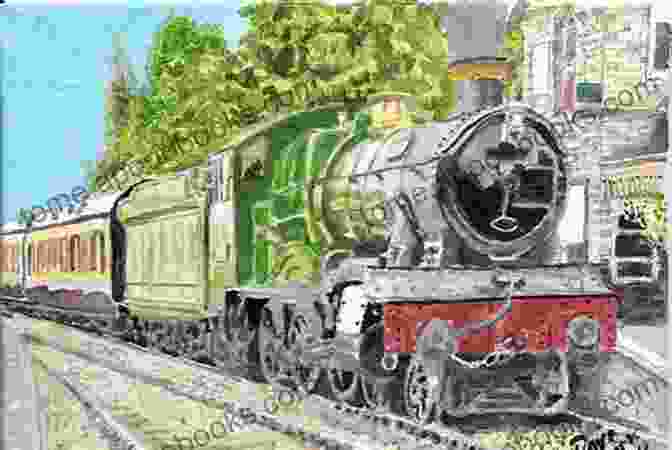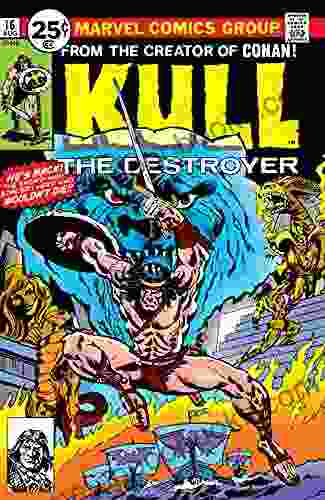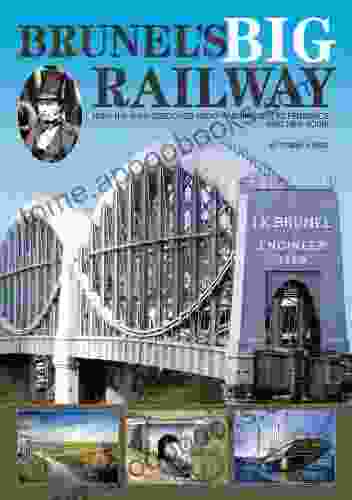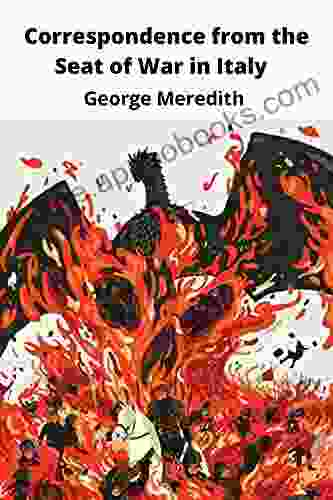Brunel's Big Railway: How the GWR Stretched from Paddington to Penzance and Beyond

The Great Western Railway (GWR) was one of the most important railways in the UK, and its construction was a major engineering feat. This book tells the story of the GWR, from its early beginnings to its eventual expansion into one of the largest and most successful railways in the country.
The Early Years
The GWR was founded in 1833 by a group of businessmen who wanted to build a railway from London to Bristol. The line was eventually extended to Penzance in 1859, and to Plymouth in 1864. The GWR also built a number of branch lines, which helped to connect the railway to other parts of the country.
4.3 out of 5
| Language | : | English |
| File size | : | 4547 KB |
| Text-to-Speech | : | Enabled |
| Screen Reader | : | Supported |
| Enhanced typesetting | : | Enabled |
| Word Wise | : | Enabled |
| Print length | : | 199 pages |
| Lending | : | Enabled |
Isambard Kingdom Brunel
One of the most important figures in the history of the GWR was Isambard Kingdom Brunel. Brunel was a brilliant engineer who designed many of the GWR's most iconic structures, including the Clifton Suspension Bridge and the Royal Albert Bridge. Brunel also played a key role in the development of the GWR's broad gauge track, which was wider than the standard gauge used by other railways.
The Broad Gauge
The GWR's broad gauge was one of the most distinctive features of the railway. The broad gauge allowed the GWR to run larger and heavier trains, which could carry more passengers and freight. However, the broad gauge also made it difficult for the GWR to connect with other railways, which used the standard gauge.
The Battle of the Gauges
In the 1840s, there was a great debate about which gauge should be adopted as the standard for the UK's railways. The GWR was a strong advocate for the broad gauge, but the standard gauge eventually won out. In 1892, the GWR was forced to convert its lines to the standard gauge.
The GWR in the 20th Century
The GWR continued to operate as an independent company until 1948, when it was nationalized along with the other major railways in the UK. The GWR's lines were eventually integrated into the national rail network, and the GWR brand was retired in 1965.
Legacy
The GWR left a lasting legacy on the UK's railway network. The GWR's lines still form the backbone of the UK's rail network, and many of the GWR's stations and structures are still in use today. The GWR also played a key role in the development of the UK's railway industry, and its engineers and innovations helped to shape the way that we travel today.
The GWR was one of the most important railways in the UK, and its construction was a major engineering feat. This book tells the story of the GWR, from its early beginnings to its eventual expansion into one of the largest and most successful railways in the country. The GWR's legacy lives on today in the UK's railway network, and its engineers and innovations helped to shape the way that we travel today.

The GWR was one of the most important railways in the UK, and its construction was a major engineering feat. This book tells the story of the GWR, from its early beginnings to its eventual expansion into one of the largest and most successful railways in the country.
The GWR was founded in 1833 by a group of businessmen who wanted to build a railway from London to Bristol. The line was eventually extended to Penzance in 1859, and to Plymouth in 1864. The GWR also built a number of branch lines, which helped to connect the railway to other parts of the country.
One of the most important figures in the history of the GWR was Isambard Kingdom Brunel. Brunel was a brilliant engineer who designed many of the GWR's most iconic structures, including the Clifton Suspension Bridge and the Royal Albert Bridge. Brunel also played a key role in the development of the GWR's broad gauge track, which was wider than the standard gauge used by other railways.
The GWR's broad gauge was one of the most distinctive features of the railway. The broad gauge allowed the GWR to run larger and heavier trains, which could carry more passengers and freight. However, the broad gauge also made it difficult for the GWR to connect with other railways, which used the standard gauge.
In the 1840s, there was a great debate about which gauge should be adopted as the standard for the UK's railways. The GWR was a strong advocate for the broad gauge, but the standard gauge eventually won out. In 1892, the GWR was forced to convert its lines to the standard gauge.
The GWR continued to operate as an independent company until 1948, when it was nationalized along with the other major railways in the UK. The GWR's lines were eventually integrated into the national rail network, and the GWR brand was retired in 1965.
The GWR left a lasting legacy on the UK's railway network. The GWR's lines still form the backbone of the UK's rail network, and many of the GWR's stations and structures are still in use today. The GWR also played a key role in the development of the UK's railway industry, and its engineers and innovations helped to shape the way that we travel today.
4.3 out of 5
| Language | : | English |
| File size | : | 4547 KB |
| Text-to-Speech | : | Enabled |
| Screen Reader | : | Supported |
| Enhanced typesetting | : | Enabled |
| Word Wise | : | Enabled |
| Print length | : | 199 pages |
| Lending | : | Enabled |
Do you want to contribute by writing guest posts on this blog?
Please contact us and send us a resume of previous articles that you have written.
 Book
Book Novel
Novel Page
Page Chapter
Chapter Text
Text Story
Story Genre
Genre Reader
Reader Library
Library Paperback
Paperback E-book
E-book Magazine
Magazine Newspaper
Newspaper Paragraph
Paragraph Sentence
Sentence Bookmark
Bookmark Shelf
Shelf Glossary
Glossary Bibliography
Bibliography Foreword
Foreword Preface
Preface Synopsis
Synopsis Annotation
Annotation Footnote
Footnote Manuscript
Manuscript Scroll
Scroll Codex
Codex Tome
Tome Bestseller
Bestseller Classics
Classics Library card
Library card Narrative
Narrative Biography
Biography Autobiography
Autobiography Memoir
Memoir Reference
Reference Encyclopedia
Encyclopedia Sarah Hoss
Sarah Hoss Kyle Robertson
Kyle Robertson Anouska Jones
Anouska Jones B F Accardi
B F Accardi Applicant Guide
Applicant Guide Elizabeth Stringer Keefe
Elizabeth Stringer Keefe Susan Berry Casey
Susan Berry Casey John Greenleaf Whittier
John Greenleaf Whittier Apollinaire Dschoutezo
Apollinaire Dschoutezo James F Fisher
James F Fisher Lindsay Nelson
Lindsay Nelson Susan Fletcher
Susan Fletcher Antara Mann
Antara Mann Michael Scheuer
Michael Scheuer Audrey Rush
Audrey Rush Cathe Swanson
Cathe Swanson Anthony Ryan
Anthony Ryan Ashleynicole
Ashleynicole Carla F Shelton
Carla F Shelton Mish
Mish
Light bulbAdvertise smarter! Our strategic ad space ensures maximum exposure. Reserve your spot today!

 Carson BlairUnveiling a New Perspective: Exploring Class, Race, and Dominican National...
Carson BlairUnveiling a New Perspective: Exploring Class, Race, and Dominican National...
 David BaldacciUnleash the Untamed Spirit: A Journey into the Enchanting World of "Waves to...
David BaldacciUnleash the Untamed Spirit: A Journey into the Enchanting World of "Waves to... Chinua AchebeFollow ·12.4k
Chinua AchebeFollow ·12.4k Rod WardFollow ·9.2k
Rod WardFollow ·9.2k Ray BlairFollow ·2k
Ray BlairFollow ·2k Clark BellFollow ·15.1k
Clark BellFollow ·15.1k Asher BellFollow ·16.3k
Asher BellFollow ·16.3k Bo CoxFollow ·2.2k
Bo CoxFollow ·2.2k Miguel de CervantesFollow ·3.1k
Miguel de CervantesFollow ·3.1k David MitchellFollow ·17.7k
David MitchellFollow ·17.7k

 Gabriel Garcia Marquez
Gabriel Garcia MarquezLad Dog Baby Professor: The Perfect Book for Your Child
Lad Dog Baby...

 Fredrick Cox
Fredrick CoxAn Excerpt With Fifty Ways To Help Animals Promo Books:...
: Embracing Animal...

 Kelly Blair
Kelly Blair5th Grade US History: Famous US Authors: Fifth Grade...
Step into a captivating world of historical...

 Natsume Sōseki
Natsume SōsekiKull the Destroyer: A Timeless Tale of Sword and Sorcery
The Creation of a...

 Jim Cox
Jim CoxDas Ist Supertoll: Unlocking the Magic of German for Kids
Immersive Learning with...

 Bruce Snyder
Bruce SnyderUnlock the World of Quilting for Kids: Discover "Quick...
Are you ready to embark on a delightful...
4.3 out of 5
| Language | : | English |
| File size | : | 4547 KB |
| Text-to-Speech | : | Enabled |
| Screen Reader | : | Supported |
| Enhanced typesetting | : | Enabled |
| Word Wise | : | Enabled |
| Print length | : | 199 pages |
| Lending | : | Enabled |







